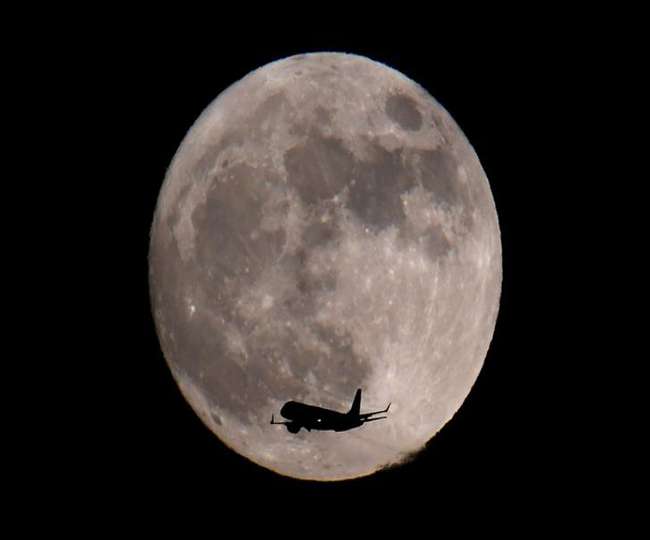News Clipping on 16-04-2019
Facial recognition technology being used not just in Xinjiang but also in wealthy cities like Hangzhou
The Chinese government has drawn wide international condemnation for its harsh crackdown on ethnic Muslims in its western region, including holding as many as one million of them in detention camps.
Now, documents and interviews show that authorities are also using a vast, secret system of advanced facial recognition technology to track and control the Uighurs. It is the first known example of a government intentionally using artificial intelligence for racial profiling, experts said.
Keeping records
The facial recognition technology, which is integrated into China’s rapidly expanding networks of surveillance cameras, looks exclusively for Uighurs based on their appearance and keeps records of their comings and goings for search and review. The practice makes China a pioneer in applying next-generation technology to watch its people, potentially ushering in a new era of automated racism.
The technology and its use to keep tabs on China’s 11 million Uighurs were described by five people with direct knowledge of the systems. The New York Times also reviewed databases used by the police, government procurement documents and advertising materials distributed by the AI companies that make the systems.
Chinese authorities already maintain a vast surveillance net, including tracking people’s DNA, in the western region of Xinjiang. But the scope of the new systems extends that monitoring into many other corners of the country. Police are now using facial recognition technology to target Uighurs in wealthy eastern cities like Hangzhou and Wenzhou and across the coastal province of Fujian, said two of the people. Law enforcement in the central Chinese city of Sanmenxia ran a system that over the course of a month this year screened whether residents were Uighurs 5,00,000 times.
A new generation of start-ups catering to Beijing’s authoritarian needs are beginning to set the tone for emerging technologies like artificial intelligence.
From a technology standpoint, using algorithms to label people based on race or ethnicity has become relatively easy. Companies like IBM advertise software that can sort people into broad groups.
Breaking new ground
But China has broken new ground by identifying one ethnic group for law enforcement purposes. One Chinese startup, CloudWalk, outlined a sample experience in marketing its own surveillance systems. The technology, it said, could recognise “sensitive groups of people.”
In practice, the systems are imperfect, two of the people said. Often, their accuracy depends on environmental factors like lighting and the positioning of cameras. And while facial recognition technology uses aspects like skin tone and face shapes to sort images in photos or videos, it must be told by humans to categorise people based on social definitions of race or ethnicity. Chinese police, with the help of the startups, have done that.NY Times
NASA की ऐतिहासिक खोज: चंद्रमा पर जीवन की संभावना के संकेत, ऐसे निकलता है पानी Publish Date:Tue, 16 Apr 2019 11:17 AM (IST)

मैरीलैंड,एएनआइ। अमेरिका की स्पेस एजेंसी नासा ने एक ऐसी स्टडी की है, जिसकी मदद से आने वाले दिनों में चंद्रमा पर जीवन की खोज करने में काफी मदद मिल सकती है। नासा ने सोमवार को स्टडी में पाया कि उल्का पिंड़ों (meteor) की बौछारों के वक्त चंद्रमा की सतह पर पानी निकलता है। भविष्य में चंद्रमा पर जीवन की संभावनाओं के लिए नासा की ये स्टडी काफी महत्वपूर्ण साबित हो सकती है।
ये खोज ‘लुनार एट्मसफियर एंड डस्ट इनवायरमेंट एक्सप्लोरर’ (एलएडीईई) ने की है। बता दें कि एलएडीईई नासा का रोबोटिक मिशन है। इसे 2013 से अप्रैल 2014 तक चंद्रमा की ऑरबिट का चक्कर लगाया। इसे चंद्रमा पर जीवन की संभावनाएं तलाशने के लिए अंतरिक्ष में भेजा गया था। इससे ही पता चला कि चंद्रमा पर उल्का बौछार के वक्त पानी निकलता है।
नासा की तरफ से जारी प्रेस रिलिज में कहा गया है कि ‘चंद्रमा पर ज्यादातर वक्त H2O (पानी) और OH की मात्रा नहीं पाई जाती लेकिन चंद्रमा से उल्का पिंड गुजरने पर भाप का पता चला है। जब भी उल्का पिंड चंद्रमा से गुजर जाते है तब H2O और OH अपने आप समाप्त हो जाता है। चंद्रमा पर पानी और भाप से जुड़ी यह रिसर्च ‘नेचर जियोसाइंस’ में छपी है जिसे नासा के गोडार्ड स्पेस फ्लाइट सेंटर के मेहदी बेना ने तैयार की है|
नासा के मुताबिक, वैज्ञानिकों की इस खोज से चंद्रमा की तसह पर पानी की स्थिति का पता लगाने में मदद मिलेगी। इतना ही नहीं इसकी मदद से चंद्रमा के इतिहास, दिन प्रतिदन हो रही गतिविधियों और विकास के बारे में पता चलेगा। पानी का पता चलने से चंद्रमा पर स्थित गड्ढों (craters)में बर्फ की मौजूदगी है या नहीं इसकी जानकारी भी मिलेगी। हालांकि, इस खोज में जितने भी वैज्ञानिक शामिल है उन्होंने इस बात को खारिज कर दिया है कि धरती की सतह पर और इसके आसपास मौजूद पानी उल्का पिंड़ों की वजह से है। वैज्ञानिकों ने कहा कि कुछ पानी चंद्रमा पर हुई उल्का पिंड़ों से आया हो सकता है।
Posted By: Atyagi.jimmc

‘न्यूयॉर्क टाइम्स’, ‘वॉल स्ट्रीट जर्नल’ को ट्रम्प संबंधी खबरों के लिए पुलित्जर पुरस्कार
भाषा | Updated:

